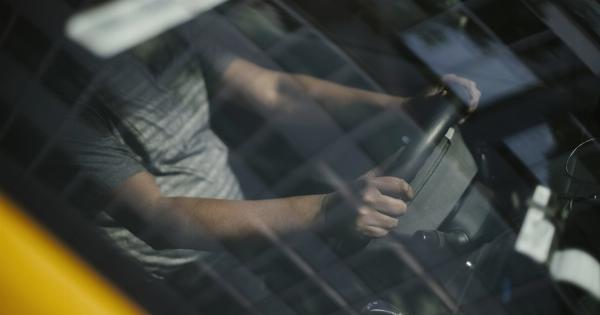As summer approaches, many people around the world look forward to indulging in various outdoor activities. One popular activity that draws countless enthusiasts is diving.
Whether it’s in the open ocean, a lake, or a swimming pool, diving provides a unique and exhilarating experience. However, as enjoyable as it may be, it’s important to be aware of the potential risks involved in summer diving and take necessary precautions to ensure safety.
This article will explore some of the risks associated with summer diving and how ELS (Emergency Life Support) can help mitigate them.
Risk #1: Diving Accidents
Diving accidents can occur due to a variety of reasons, including equipment failure, lack of training, or negligence. These accidents can result in serious injuries or even fatalities.
It is crucial to prioritize safety and follow proper diving protocols to minimize the risk of accidents.
Risk #2: Drowning
Drowning is perhaps one of the most significant risks associated with diving. Being in an unfamiliar environment can be disorienting, especially if visibility is low or there are hidden hazards.
It is important to have proper supervision, use buddy systems, and have the necessary skills to handle unexpected situations underwater.
Risk #3: Decompression Sickness
Decompression sickness, also known as the bends, is a condition that occurs when a diver ascends too quickly, causing nitrogen bubbles to form in the body’s tissues and blood. This can lead to severe pain, joint stiffness, and even paralysis.
Divers need to be knowledgeable about decompression tables and follow proper ascent rates to minimize the risk of this potentially dangerous condition.
Risk #4: Sunburn and Dehydration
Summer diving often involves spending long hours under the sun. Without adequate sun protection, divers are at risk of sunburn and increased susceptibility to heatstroke.
It is essential to wear appropriate sunscreen, protective clothing, and stay hydrated to maintain optimal health while diving.
Risk #5: Marine Life Hazards
Encountering marine life is an exciting part of diving, but it can also pose risks. Some species, like jellyfish or certain types of fish, are venomous and can cause harm if touched.
Divers should familiarize themselves with the local marine life and exercise caution to avoid potential dangers.
Risk #6: Poor Visibility
Poor visibility can hinder a diver’s ability to navigate underwater. Murky water conditions, silt deposits, or algae blooms can limit visibility, increasing the chances of getting lost or colliding with obstacles.
Ensuring proper dive planning and using appropriate dive lights can help mitigate this risk.
Risk #7: Equipment Malfunction
Reliable and well-maintained equipment is crucial for safe diving. However, equipment malfunctions can still occur, compromising the diver’s safety.
Regular inspections, proper maintenance, and carrying backup equipment are essential to minimize the risk of equipment-related incidents while diving.
Risk #8: Inexperienced or Reckless Divers
Diving in close proximity to inexperienced or reckless divers can significantly increase the risk level. Their lack of knowledge or disregard for safety procedures can inadvertently put others in danger.
It is important to dive with certified, responsible individuals who prioritize safety and follow diving regulations.
ELS: Emergency Life Support
In light of the potential risks associated with summer diving, having access to reliable emergency life support systems can be a game-changer. ELS provides divers with an extra layer of protection and peace of mind in case of emergencies.
These systems can include various components, such as:.
1. Underwater Communication Devices
Underwater communication devices allow divers to stay connected with their peers and surface teams, helping to relay important information or summon assistance when needed.
These devices can include full-face masks with integrated communication systems or diver-to-diver communication devices.
2. Emergency Oxygen Systems
Emergency oxygen systems are crucial for providing immediate oxygen in the event of decompression sickness, near-drowning incidents, or other emergencies.
These systems typically consist of compact, portable oxygen cylinders and delivery devices that are easy to use even in stressful situations.
3. First Aid Supplies
Having comprehensive first aid supplies readily available can greatly aid in addressing injuries or illnesses that may occur while diving.
Kits specifically designed for divers typically contain items such as bandages, antiseptics, wound dressings, and tools for managing injuries in a water environment.
4. Dive Planning Tools
Dive planning tools, such as dive computers and decompression software, help divers calculate safe ascent rates, dive times, and decompression schedules.
These tools provide valuable information that can help divers avoid decompression sickness and make informed decisions while planning their dives.
5. Safety Signaling Devices
Safety signaling devices, such as whistles, signaling mirrors, and surface marker buoys, contribute to diver safety by increasing visibility and alerting others in case of an emergency.
These devices can help divers attract attention, signal distress, or indicate their location underwater.
In conclusion, summer diving offers a thrilling and unforgettable experience, but it is essential to be aware of the potential risks involved.
By understanding these risks, prioritizing safety, and utilizing reliable emergency life support systems like ELS, divers can enjoy their underwater adventures with confidence and peace of mind. Remember, a successful dive is not only about exploring the depths but also returning safely to the surface.































